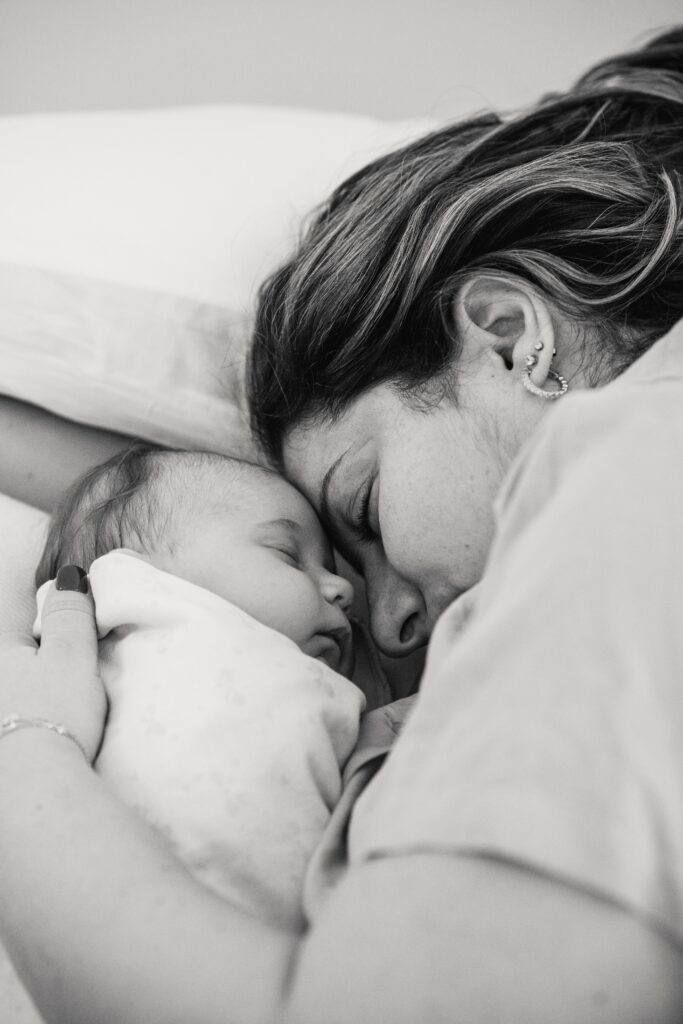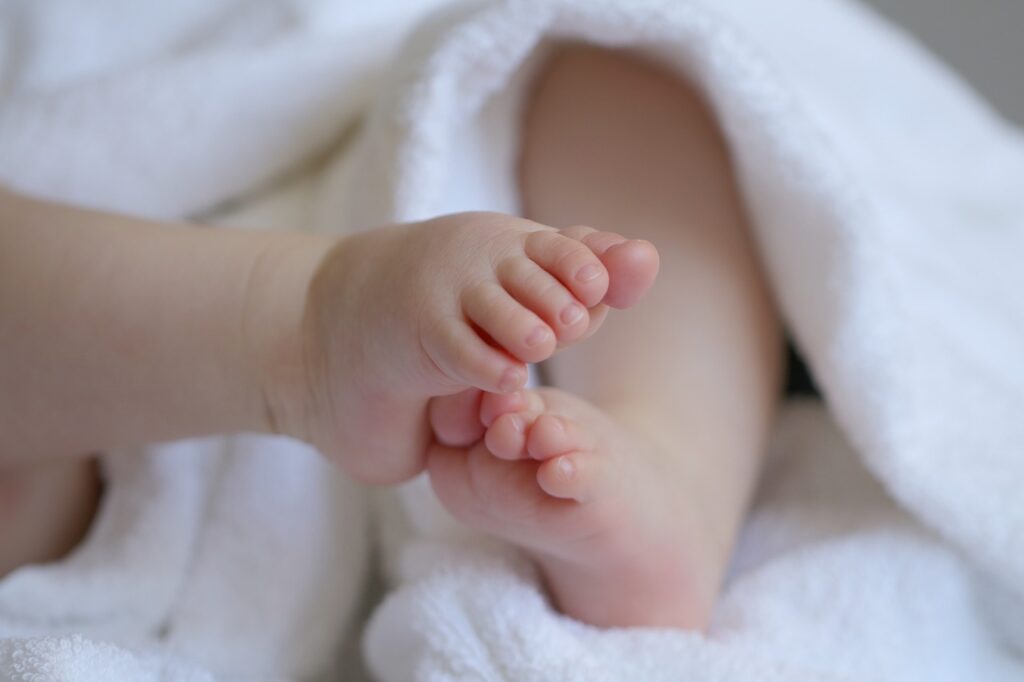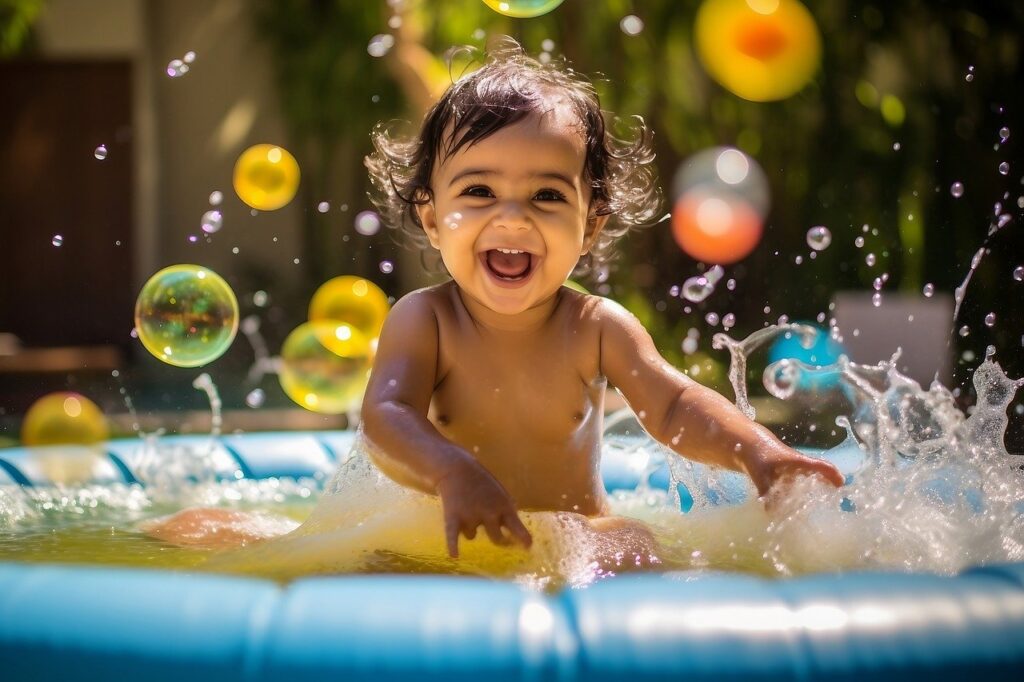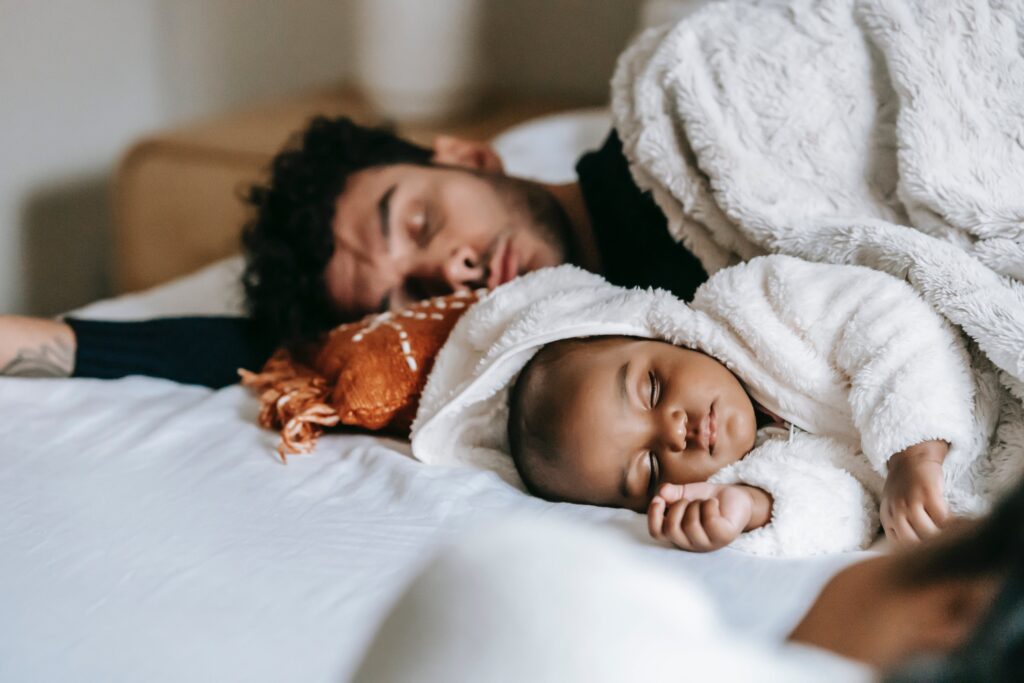Let’s talk What first-time-parents would need before the baby arrives
First of all, relax! I know that with such a wide variety of clothing, cribs, and various accessories, your head may be spinning. It was the same for me. That’s why I decided to write this post to help focus on the newborn equipment that can really be useful for young moms and dads taking care of their newborns.

Numero uno – clothing. What does a baby really need? Actually, not that much.
- 5-8 sleeveless bodysuits and 5-8 long-sleeved ones. Depending on the season and the temperature in the room where the baby will be, the number of bodysuits with different sleeve lengths may vary. For example, if the baby is born in autumn or winter, the number of short-sleeved bodysuits can be reduced to 2 to 5 pieces. If the baby is born in spring or summer, on the contrary, long-sleeved bodysuits can be somewhat reduced. 10 bodysuits of one style is a maximum that you could possibly need considering how quickly babies grow.
Photo by Sarah Chai on Pexels
TIP: Many parents recommend choosing clothing with zippers because it can be very tedious to button up a lot of buttons. It didn’t bother me much but my husband did complain. REMINDER! In the first year, the baby grows very quickly, so it doesn’t make sense to buy a lot of clothes of the same size. In a month or even quicker, the baby will already outgrow the bodysuits for newborns.
To make it easy for parents to dress a newborn, bodysuits with side fasteners will come in handy. This way, you won’t have to put them over your baby’s head.
- The best clothing for a newborn that is comfortable for the baby and easy to put on is onesies! The baby can move freely, and there won’t be shirts that could roll up, or pants with socks that constantly slide down. The baby is warm and comfortable, and their mom doesn’t worry. You’ll need about 10 of them unless you are going to spend some cash on those cute cardigans, pants, or dresses for newborns. Then you probably don’t need so many onesies.
- Don’t forget about sleepers. In the first few months, babies cannot regulate the temperature of their bodies. Therefore, they need to be warm and cozy in the crib. WHO does not recommend putting blankets, pillows, toys, and other items in the crib to minimize the risk of sudden infant death. Two or three sleepsacks will be enough. If you use disposable diapers, two sleepsacks will be sufficient. And if the budget is modest, one sleeper will do. However, due to frequent burps and leaks from diapers, it may be challenging to wash and dry the sleeper on time. We used a sleeper only at night because during the day, the baby often slept in our arms or next to us in bed.
- Beanies and gloves. My little one wasn’t wearing them at home. This way, the baby adapts to thermoregulation. Moreover, they can feel different textures with their little fingers (clothing, toys, their own and parents’ skin), which is good for development. Only when we aired the rooms or went outside did we put on a hat. At home, a couple of light cotton caps with ties will be enough. For walks in cool weather, you’ll need warmer hats. One warm hat and two lighter ones will be enough.
- For cold days, you’ll need a warm jumpsuit with a hood and a cover for the stroller.
That’s all you need for baby clothes. Everything else parents are buying for their enjoyment. I also got excited about buying baby clothes and purchased various cute sets, costumes, socks, etc.

Now let’s talk about hygiene.
- For umbilical care, you’ll need a disposable sterile bandage and alcohol-free antiseptic. It’s enough to carefully wipe the navel once a day. It’s even more important to ensure that the umbilical cord does not rub against the diaper (it’s necessary to fold it below the navel) and clothing (it’s enough for the clothes to sit a little loose). It’s best to begin with tummy time when the umbilical cord falls off on its own. This takes about two weeks.
- For bathing, in the beginning, you only need baby shampoo and a couple of baby towels. You can bathe the baby in an ordinary bathtub, holding them with one hand under the buttocks and the other supporting the shoulder. This way, their head will rest on your forearm. You can bathe the baby once a week. They usually don’t get dirty unless they poo like a fountain. It’s enough to wash the baby in the sink, holding them in an “airplane” pose. If you are very concerned, it makes sense to buy a baby bathtub with a special holder where you can lay the baby without holding them. However, never leave a newborn unattended in the water. Bath time takes about 5 minutes at first. As the baby grows, they will let you know whether they like bathing or not. When the baby can sit on their own, they will be very interested in splashing around with toys.
Unfortunatelly, we missed the time when you could quickly teach a newborn to swim. This necessary skill can most likely be acquired while the baby still remembers what it’s like to be/live in the water. It’s good that there are now many courses for moms with newborns.
- Nasal aspirator. Babies often face breathing problems through their noses. Congestion can disrupt a baby’s sleep, so sometimes using a nasal aspirator makes sense. Nowadays, there are many electric nasal aspirators on the market that effectively and quickly suction out mucus.

For hair, nails, and skin care, you won’t need much.
- In the first month, many midwives do not recommend cutting the baby’s nails at all. The nail plate is still too thin and can be easily damaged. However, I couldn’t stand the sight of the tiny scratches on the baby’s face and how long the nails were. So I carefully cut the free edge with small manicure scissors. This procedure took some time because it was necessary to be extremely careful not to pinch the little fingers. Usually, there are special baby scissors with rounded edges for these purposes, but in my case (I had one pair in a set, and I bought another one later) two pairs of scissors turned out to be too thick to cut the tiniest nails. So, I cut the nails with my manicure scissors at my own risk, wiping them with medical alcohol before use.
- For combing, you’ll need a soft baby brush. The hair is still so thin and regular brushes will only cause discomfort to your baby. However, you can do without a brush for the first time if your baby was not born with long hair like Rapunzel.
- What young parents will definitely need is an electronic thermometer. Babies’ temperature is measured through the sphincter. This method is the most accurate. You can also buy a contactless thermometer to measure the temperature in the ears, but these measurements will always be imprecise.
Let’s talk about the messier things. 🙂
Newborn babies poop several times a day. While the baby is consuming milk, their stool has a soft consistency that can vary each time. Therefore, diapers may leak, and the color of the stool may cause concern. It’s crucial for young parents to communicate with a nurse or doctor right after birth or when they are going to visit their pediatrician for the first check-up to determine when the color or consistency of the baby’s discharge should worry them. Usually, there’s no need to worry, but if it brings you peace of mind, take photos of the baby’s “masterpieces” and show them to the doctor or nurse next time.
Now, I’ve deviated a bit from the topic. In this article, I won’t discuss reusable diapers. That’s for later. If you want to learn how to take care of a newborn, take a glance at The New York Times article “Newborn Baby Care Basics: What to Know When You Leave the Hospital” They have explained how to do it properly. No worries, you’ll get used to it and it won’t be as scary anymore.
So, as I mentioned earlier, newborns do their business many times a day. Parents need to have a designated space for this. At least initially, I found it convenient to change diapers and dress the baby on my writing desk, which I transformed into a changing table by adding a special mattress. It’s important to place diapers under the baby because they might poop even at the same moment as you’re removing the soiled diaper. This way, you won’t soil everything around, and you won’t have to bathe the baby completely.

Other Essentials
- Infrared heating lamp for the changing table and a night light. Since babies poorly regulate their body temperature, the room temperature may be too low for a naked baby lying on the table. It’s noticed that newborns enjoy lying under such lamps, and our little one also stopped fussing under the warm light. Additionally, a night light is useful for changing diapers and feeding the baby at night.
- A Moses basket or a portable crib is also handy. This way, the mother won’t worry about what’s happening with the baby when she needs to go to the kitchen, living room, or the shower. You can always take the baby with you and have your hands free. Moreover, all young moms are familiar with the phenomenon of phantom crying. So, while you’re showering, you won’t have to turn off the water every 30 seconds to listen if your baby is crying. Such baskets sometimes have special designs that allow you to place them in the room next to the bed as an attachment crib.
- Play mat for the floor. Since I didn’t have a Moses basket, when the baby learned to turn over, I left them on the floor on a mat when I needed to step away for a few minutes, for example, to use the bathroom.
- Attachable crib. All you need for such a crib is a mattress and a couple of sheets. The baby doesn’t need anything else, they lie close to you, but they have their own space at the same time.
- Baby monitor. There’s now a wide variety of baby monitors with cameras that react to movement, display room temperature, etc. Honestly, we purchased a baby monitor when our child was around 5-6 months old. While a baby monitor might make things easier, I can’t say that we had problems due to its absence, as in the early days after the baby’s birth, we lived in a one-room apartment.
- A couple of bright toys, rustling toys, and some musical toys will be enough initially because the baby still has poor eyesight and is interested only in close contact with mom and dad. There are sets with black and white cards with various images, as the baby’s eyesight is still very blurry in the first month, and such cards help the newborn focus their sight.
- A couple of pacifiers and bottles for feeding. Here it’s 50/50. Either you’ll need them or not. It depends on how breastfeeding goes. Experts don’t recommend giving pacifiers to newborns before they’ve learned to suckle properly. However, in my opinion, it’s better to have these items at home just in case.
So, that’s all that young parents need for the first few months. This list may look excessive or too small, depending on your budget and wishes. Nevertheless, these were the things I actually used every day. Later on, you’ll get used to your new role as a parent and get to know your little one, so you’ll understand their needs better.
Good luck!